Fort Tryon Park is a 67-acre-large (27 hectare) park located on a cliffy terrain in the Hudson Heights neighborhood, which is part of Washington Heights, an area in the northwest of Manhattan Island.
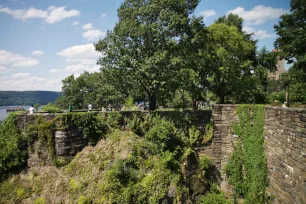
Due to its high topographical location, the park offers great views over the surrounding landscape. The most popular attractions in the park are the beautiful Heather Garden and the Cloisters, a replica of a Medieval monastery which is home to a branch of the Metropolitan Museum of Art, and has magnificent displays of medieval art.
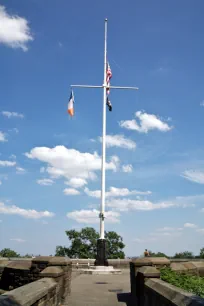
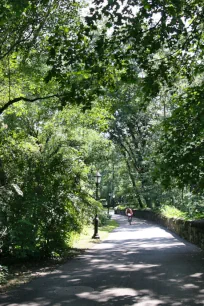
Fort Tryon
Fort Tryon Park is situated at the site of the former Fort Tryon, which was one of several outposts of Fort Washington. The fort was used during the American Revolution by the Continental army in an effort to repel the British Army.
The British Forces and their Hessian mercenaries however defeated the revolutionaries on November 16, 1776, and named the outpost after Major General Sir William Tryon, the last British governor of the colonial province of New York. Remains of the fortifications are still clearly visible in the park. A plaque and flagpole commemorate the defense of the outpost.
Creation of the park
After the war the area was parceled out and several wealthy New Yorkers built their estates here. In 1917 John D. Rockefeller started to buy the estates to create a new park. He hired the landscape design firm of the Olmsted Brothers, formed by stepbrothers John Charles Olmsted and Frederick Law Olmsted, Jr. (son of the co-creator of Central Park).
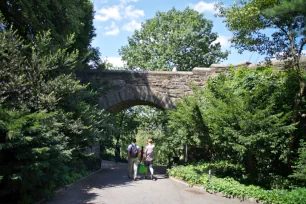
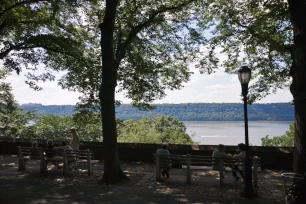
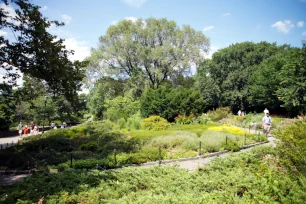
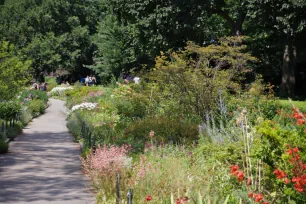
The Olmsteds used the rugged terrain to create a unique thickly wooded park with stone pedestrian bridges, steep winding walking paths and terraces from where visitors have a magnificent over the surroundings, in particular the Hudson River. Rockefeller also obtained the land across the river – known as the Palisades – so that visitors would have unspoiled views over the river. He donated this land and the park to the city in 1935.
Gardens
A popular garden in the park is the three acre (1.2 ha) Heather Garden, a colorful terraced garden with magnificent panoramas over the Hudson River. For many decades after the Second World War the garden had been neglected and by the 1980s the views had become obscured by overgrown plantings. In 1983 the garden was given landmark status and two years later, on the 50th anniversary of the opening of the park, the New York City Department of Parks finally decided to renovate the Heather Garden. The renovation, which was carried out according to the original design, was complete in 1988.
Another, less known garden in Fort Tryon Park is the Alpine garden, situated near the eastern entrance. The peculiar garden features a grotto, narrow winding staircases and rocky slopes. The Alpine Garden, one of the most unique gardens in the city, was even more neglected than the Heather Garden, but fortunately a donation in 2006 by the Peter Jay Sharp Foundation allowed this garden to be restored as well.
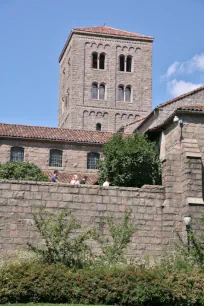
The Cloisters
In 1914, George Grey Barnard, an American Sculptor, had created a small museum in the Hudson Heights neighborhood, where he displayed his private collection of medieval art. In 1920 the Metropolitan Museum of Art acquired the collection thanks to a donation from John D. Rockefeller.
The Metropolitan opened the new museum in 1938, in a reconstructed French medieval Cloister, which was built at Fort Tryon Park. It is a magnificent setting, ideal for the display of the fine medieval art collection.

